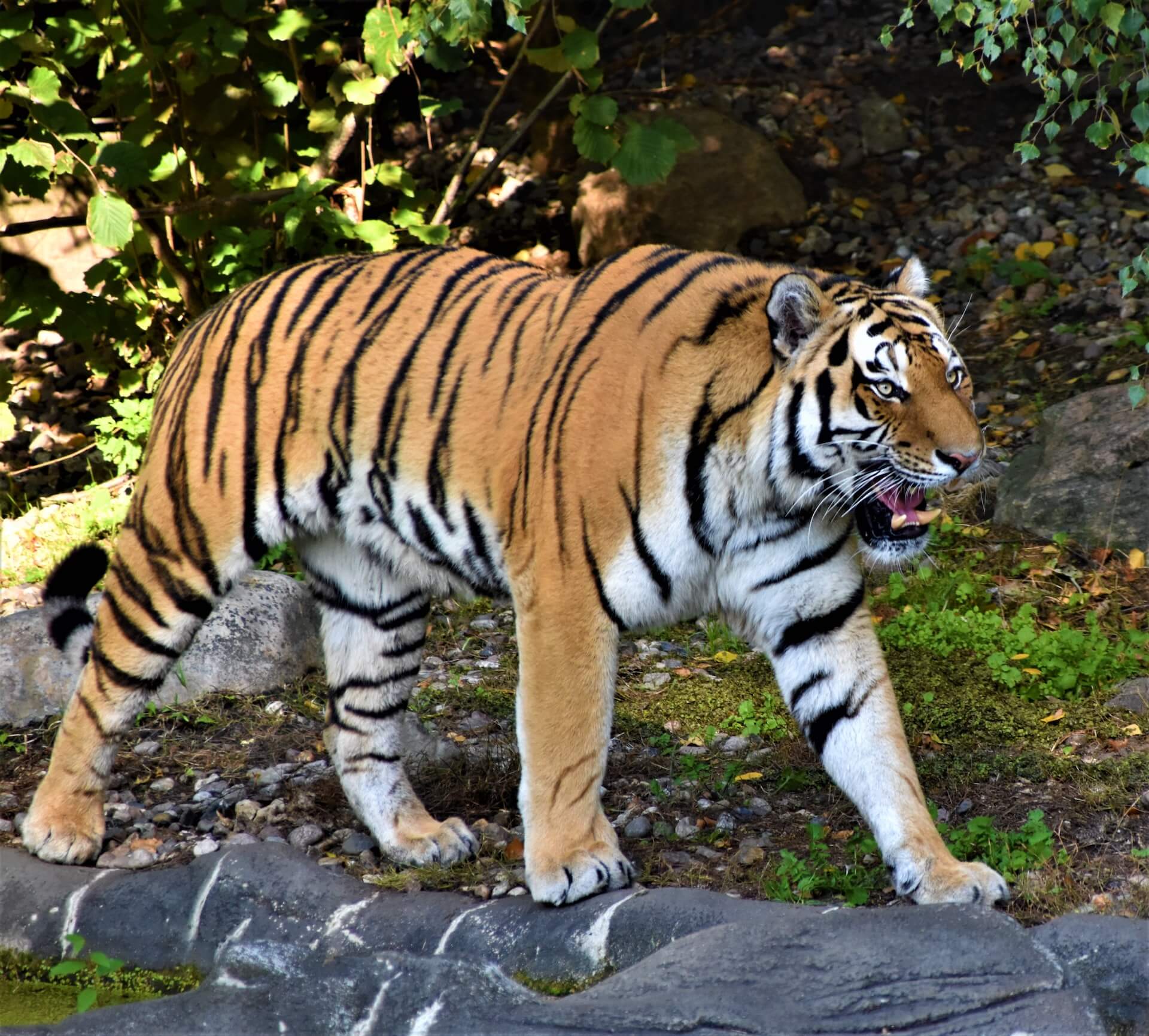Wildlife conservation campaigns worldwide continue with more people and organizations focusing on protecting endangered species like the golden tigers. A population assessment shows there are over 5,500 tigers globally, according to the International Union for Conservation of Nature (IUCN). Still, the number is insignificant compared to the 100,000 tigers that roamed on earth a century ago.
Poaching, destruction, and habitat fragmentation are why golden tigers are endangered. This species has been endangered since 1986, as declared by the IUCN. Three of the nine tiger species, the Caspian tiger, the Bali tiger, and the Javian tiger, are now extinct. Generally, if just one more species becomes extinct, chaos would occur in the food chain.
The prey animals would multiply, causing an ecosystem imbalance. This delicate balance will destabilize, causing prey animals, usually herbivores, to overgraze. With decreased vegetation, carbon dioxide would increase, which accelerates global warming.
The Golden Tigers
Golden tigers disappeared in the wild in the 1930s but appeared in the 1980s. Across the world, they are found in zoos since they are highly endangered. However, these rare felines have been seen in the Kaziranga National Park in India. The golden tigers are a majestic product of recessive genes, making them one of a kind. However, this tiger variation is on the brink of extinction.
People and Organizations Helping Save the Wild Golden Tigers
Fortunately for this big cat, the world has set International Tiger Day on July 29 every year to celebrate it. On this day, different countries create awareness and focus on the need to protect and conserve their habitats. According to IUCN, the tiger population dwindled from 100,000, with notable declines of up to 40% between 2000 and 2010.
Tigers stand at the top of the food chain and play a vital role in the health of an ecosystem. Although some of their kind are surviving more than others, massive felines like the Golden Tiger are on the brink of extinction. People are forced to keep them caged for their own protection—protection from humanity’s inflicted destruction. Did you ever wonder what will happen if they’re gone? Get to know the heroic people and organizations protecting their welfare.
World Wide Fund for Nature-India (WWF-India)
The World Wide Fund for Nature-India (WWF-India) was established in 1969. The WWF is a nonprofit global establishment, present in over 100 countries. With golden tigers as the most endangered, WWF-India focuses on protecting such species facing extinction through field-level activities.
The organization works with forest departments, usually conducting camera-trapping exercises and line-transect tracking to mitigate human-tiger conflict. It also secures vital wildlife corridors while identifying potential tiger habitats in external core areas. Moreover, it aims at eliminating the illegal wildlife trade and poaching of tigers. In 2010-2011, WWF-India became India’s first NGO Government partner to conduct an extensive countrywide tiger estimation.
Ramesh Thapa
For the past 22 years, Ramesh Thapa has been a Bardia National Park ranger in Nepal. His primary focus is protecting tigers, where he works up to 18 hours daily. Thapa’s dedication to preserving the tigers often separates him from his family for extended periods. He usually tracks and monitors this endangered species by noting the GPS coordinates, registering the sex, taking pictures, age, size, and other indicators of tigers in danger. Ramesh notes that poaching is one greatest challenges to tiger conservation.
Saving Tiger Society
Saving Tiger Society (STS) is another golden hero for wild tigers. STS has been a Kolkata-based organization focused on wildlife conservation for over 13 years. The organization mainly has tiger-related projects in West Bengal and Madhya Pradesh. While STS focuses on conserving endangered cats, like golden tigers, in West Bengal, the main focus is on the majestic Royal Bengal Tiger.
Subedar Ali
After being mauled by a tiger, ironically, Subedar Ali now devotes his life to conserving these felines facing extinction. Initially, he was an elephant rider, but after recovering from his nasty encounter with a Bengal tiger, he is now an Anti-Poaching Patrol Leader in Corbett National Park in India. He mainly studies and reports tiger trails, tracks, and other signs of poaching movements.
Wildlife Protection Society of India
In 1994, award-winning wildlife filmmaker and photographer Belinda Wright founded the Wildlife Protection Society of India (WPSI). While it highlights the challenging task of resolving the growing wildlife crisis in India, they don’t escalate the illegal wildlife trade.
The organization investigates the trade of tiger parts and exposes the widespread poaching of tigers like one linked to traditional Chinese medicine. Today, any death of these endangered cats, such as the golden tigers, is no longer ignored. With a database of tiger poaching activities, WPSI creates awareness among the people about the need to conserve this dwindling species.
Saving the golden tigers in zoos and other species in the park has led to the emergence of these passionate heroes dedicated to conserving these cats. With a huge portion of the golden tigers wiped out through poaching and fragmentation of their habitat, it’s critical to protect them and help rebreed to boost the ecosystem and food chain.




